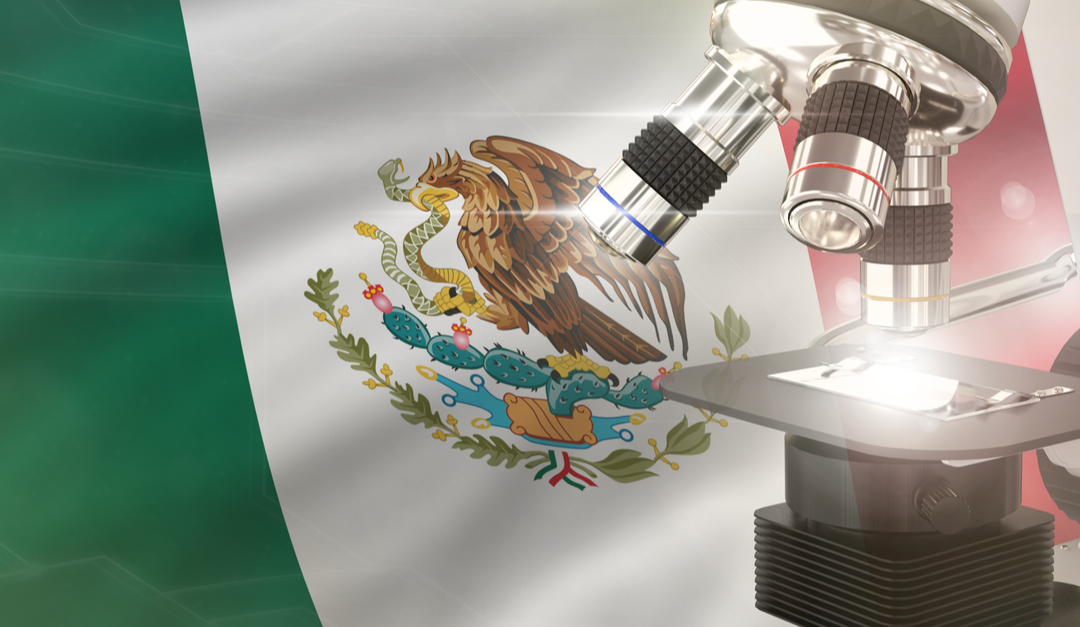Our LATAM series continues this week with Mexico’s medical device regulatory pathway. In 2019, Mexico’s import medical device market was estimated to be approximately $5.7 billion USD. In 2020, that number increased to $6.5 billion USD. With demand for medical devices on a consistent rise, particularly in major cities like New Mexico and Guadalajara, it’s imperative for MedTech companies expanding into Latin America (LATAM) to understand some general info, as well as key differences from other LATAM regulatory pathways in countries like Argentina and Brazil.
What is the regulatory body in Mexico?
The regulatory body for Mexico that oversees medical devices is called the Comisión Federal para la Protección contra Riesgos Sanitarios (COFEPRIS), which is part of the larger government department Secretariat of Health. In addition to medical devices, COFEPRIS also oversees the regulation of pharmaceutical drugs, food safety, and environmental protection.
Important general info regarding Mexico’s medical device regulatory pathway
While there are similarities between COFEPRIS, ANMAT, and ANVISA, COFEPRIS has several distinct differences that are important to note. The first key difference is the initial separation and grouping of medical devices based on function:
- In-Vitro Diagnostic Devices
- Hygiene Related Devices
- Prosthetics
- Medical Equipment
- Dental Devices
- Surgical Equipment
Once split into their respective groups, similarly to Argentina and Brazil’s classifications, Mexico separates the medical devices into classes based on risk level:
| Classification | Risk Level | Definition |
Examples |
Expected Regulatory Review Time |
| Low Risk | Low | No risk whatsoever to patient safety. | Face masks, bandages | 1-3 months |
| Class I | Low-Medium | Very little risk in terms, and generally aren’t an integral part in saving or preserving patients’ lives. | Simple surgical instruments | Recognized country equivalency: 6-8 months
Standard review: 4-10 months
|
| Class II | Medium-High | Class II devices have some potential serious risks associated should they fail in practice, making them more dangerous than Class I. | Syringes, powered wheelchairs | Recognized country equivalency: 6-8 months
Standard review: 4-10 months
|
| Class III | High | The most dangerous of the classes, Class III devices pose an unusually high risk to the patient’s safety and wellbeing. | Pacemakers, ventilators | Recognized country equivalency: 6-8 months
Standard review: 4-10 months
|
Following grouping and classification of medical devices, medical device companies seeking market access in Mexico must understand and follow its regulatory pathway to gain approval from COFEPRIS.
- Mexico Registration Holder (MRH): COFEPRIS, similar to ANVISA and ANMAT, require an in-country regulatory representative to be the point of contact through the registration process. The MRH can also provide guidance for any overseas medical device companies unsure of what group and classification their device falls under. For all medical devices, besides those that fall under Low Risk, the MRH is required to submit a registration dossier containing:
- ISO 13485 or CE certification documentation
- Certificate of Free Sale (CFS) or Certificate to Foreign Government (CFG)
- Instructions for use (IFUs)
- Labeling
- Technical and safety documentation
- Relevant testing results
Note: For Low-Risk devices, only basic medical device information much be submitted along with ISO or country equivalent, as well as either a CFS or CFG. For relevant testing results, biocompatibility and clinical data is required for Class III devices; clinical trials conducted globally are accepted.
- Spanish Translation of Dossiers: All documents submitted to COFEPRIS must be in Spanish.
- Equivalency Review: For MedTech companies that are already approved in Japan, the United States, or Canada, there is a possibility for an equivalency review process to take place through the submission of a Summary Dossier. For devices approved in the US as well as Canada, the process typically takes the same amount of time however requires less paperwork, and for those approved in Japan, the process can be expedited greatly so long as they show proof via Exportation Certification from the Ministry of Health, Labour, and Welfare (MHLW) of Japan.
- Third-Party Review (TPR): COFEPRIS offers medical device companies the option of utilizing a Third-Party Review (TPR). TPRs tend to be commercial private organizations that are authorized by COFEPRIS to initially review the application. If all parts meet their standards, they will write a formal technical report for COFEPRIS to recommend approval. Typically, after a TPR submits their report, no other information needs to be submitted to COFEPRIS, expediting the approval process. However, there is a high cost associated with such services.
Important factors to take into consideration for medical device companies entering Mexico’s market
There are some key considerations for MedTech companies looking to gain market access in Mexico:
- Validity: Regardless of the classification of the medical device, it is valid in Mexico’s market for five years once it is received approval from COFEPRIS.
- Post-Market Surveillance: Medical device companies must monitor and report all adverse events and recalls to COFEPRIS through the MRH.
Mexico’s market holds many opportunities for medical device manufacturers looking to expand their reach. To do so, however, it’s important to utilize a language service provider (LSP) that has the experience and expertise of Mexico’s medical device regulatory framework, as well as one that leverages professional, subject matter expert linguists. By doing so, MedTech companies can enter Mexico’s profitable market confidently, ensuring lower costs and quicker approval for their devices.
